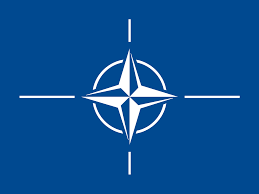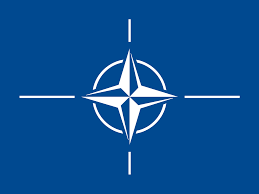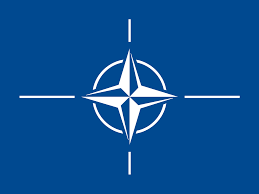
gfhghg
The United States Army is setting its sights on a 2026 demonstration for a new class of ‘ultra long-range’ Launched Effects (LEs), a move that signals a significant evolution in its aviation doctrine and modernization priorities. This initiative represents a critical step towards equipping the future force with the standoff reconnaissance, electronic warfare, and lethal strike capabilities required to operate effectively in highly contested environments. By pushing the boundaries of unmanned systems, the Army aims to create a layered, attritable, and semi-autonomous force extension that can penetrate and disrupt sophisticated enemy defenses, reducing risk to high-value crewed aircraft and ground forces.
The planned demonstration is not merely a technological milestone but the culmination of years of doctrinal development. It builds upon the foundational concept of Manned-Unmanned Teaming (MUM-T), which has seen platforms like the AH-64 Apache helicopter directly control larger UAVs such as the MQ-1C Gray Eagle. Launched Effects represent the next generation of this concept, envisioning smaller, more numerous, and more expendable drones launched from both air and ground platforms to act as a distributed network of sensors and effectors. The emphasis on ‘ultra long-range’ capability is a direct response to the strategic challenges posed by the vast distances of the Indo-Pacific theater and the dense Anti-Access/Area Denial (A2/AD) networks of peer adversaries.
Doctrinal Evolution: From FARA’s Shadow to Distributed Reconnaissance
The strategic importance of long-range LEs has been significantly amplified by the Army’s recent decision to cancel the Future Attack Reconnaissance Aircraft (FARA) program. FARA was intended to be the service’s next-generation scout helicopter, but its cancellation has created a critical gap in dedicated aerial reconnaissance capabilities. The Army now plans to fill this void using a combination of space-based assets, existing platforms, and a robust investment in unmanned systems, with Launched Effects at the forefront. This shift marks a deliberate move away from relying on exquisite, high-cost manned platforms for dangerous reconnaissance missions and towards a more resilient, distributed approach.
The 2026 demonstration will serve as a crucial testbed for this new doctrine. Contenders will be expected to showcase systems that can be launched from helicopters or ground vehicles, travel hundreds of kilometers, and then loiter over target areas to provide persistent intelligence, surveillance, and reconnaissance (ISR), electronic warfare (EW) effects, or perform kinetic strikes. This capability is central to the Army’s contribution to the joint force’s ‘sensor-to-shooter’ chain, enabling Long-Range Precision Fires (LRPF) by providing targeting data from deep within enemy territory.
Strategic Implications for Multi-Domain Operations
The development of ultra long-range LEs is inextricably linked to the Army’s overarching operational concept of Multi-Domain Operations (MDO). In a conflict with a peer competitor, US forces will face integrated air defense systems, long-range fires, and sophisticated cyber and electronic warfare threats. LEs are designed to be the tip of the spear in penetrating these defenses. Deployed in swarms, they can saturate enemy radar systems, identify and jam command-and-control nodes, and destroy key air defense assets, thereby creating temporary corridors for friendly forces to exploit.
This extended reach fundamentally alters the risk calculus for Army aviation. By launching effects from well outside the range of enemy air defenses, future platforms operating under the Future Vertical Lift (FVL) umbrella can project power without exposing themselves to unacceptable levels of risk. This standoff capability ensures that Army aviation remains relevant and survivable on a battlefield where air superiority can no longer be guaranteed. Furthermore, it enhances the lethality and survivability of ground forces by providing them with an organic, deep-look sensing and strike capability that is responsive and persistent.
The Path Forward: From Demonstration to Fielding
The 2026 demonstration is a pivotal waypoint, not a final destination. The event will allow the Army to assess the technological maturity of industry offerings and refine its requirements for a formal program of record. Key technical challenges that industry must overcome include developing lightweight, efficient propulsion systems, ensuring resilient communications and autonomous navigation in GPS-denied environments, and designing modular payloads that can be easily swapped for different missions. The Army’s acquisition strategy will likely favor an open-systems architecture to encourage competition and allow for rapid capability upgrades.
Following a successful demonstration, the Army is expected to move towards competitive prototyping and, ultimately, large-scale procurement. The success of this endeavor will depend on sustained funding, clear requirements, and a willingness to embrace a more agile and iterative acquisition process. The integration of these systems into the force will also require significant investment in training and the development of new tactics, techniques, and procedures (TTPs) for employing large numbers of semi-autonomous assets in a coordinated manner.
Conclusion: A New Paradigm for Army Aviation
The planned 2026 demonstration of ultra long-range Launched Effects is more than a test of new hardware; it is a clear indicator of the US Army’s strategic direction. By prioritizing standoff, attritable, and unmanned systems, the service is adapting to the realities of modern warfare and the challenges of great power competition. These systems promise to provide the range, persistence, and survivability necessary for the Army to see first, understand first, and act first in future conflicts. The outcome of this initiative will shape the capabilities of Army aviation for decades to come, defining its role within the joint force and its ability to deter and, if necessary, defeat peer adversaries.


